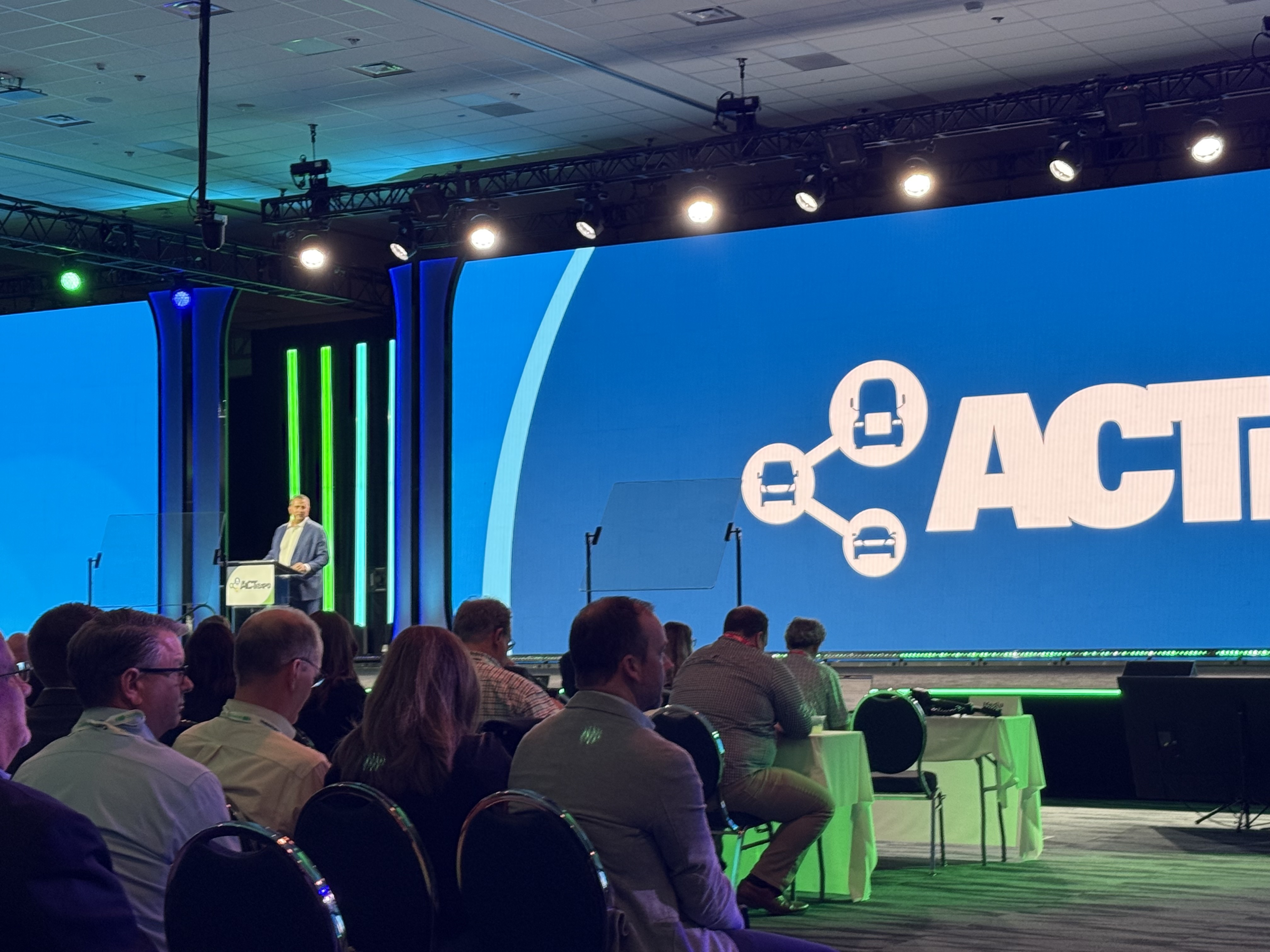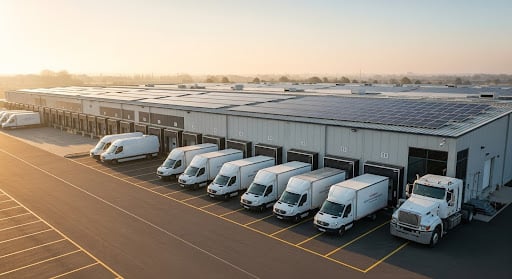A Guide to Fleet Services for Canadian Businesses
Managing a fleet is no small feat. From keeping vehicles on the road to ensuring compliance with changing regulations, today’s businesses rely...
Keep an eye on the road
Simplify your driver's routine
For efficient decision making
Ensure the compliance of your fleet
Simplify the daily life of your drivers
Maximize the value of your data
Unparalleled monitoring of your assets
The friendly competition that pays off
Planning powered by data
Exceed your customers' expectations
Provide better service to your users
Maximize the satisfaction of your citizens
Simplify your daily life on the construction site
Facilitate the electrification of your fleet
Our experts meet your needs
Easily meet the standards
Improve the safety of your drivers
Protect your data and your fleet

The energy was palpable as thousands of fleet leaders, OEMs, and technology providers filled the Anaheim Convention Center this week. Standing before the crowd, Erik Neandross, CEO of TRC and conference chair, delivered a powerful message that set the tone for North America's largest clean transportation event: "We're past the point of no return. We're only moving forward at this point."
In a year marked by shifting regulations and policy uncertainties, this unwavering confidence might seem surprising. But the numbers tell a compelling story of an industry accelerating rather than hesitating.
The exhibition floor itself stands as physical proof of the industry's trajectory. "It's twice as big as the last time we were here in Anaheim just two years ago," Neandross explained, gesturing toward the massive expo that would soon open to attendees. With 500 exhibitors and sponsors—a remarkable 40% year-over-year increase from the 360 in Las Vegas last year—the growth is impossible to ignore.
Nearly 12,000 registrations matched last year's record attendance, with international participation holding strong at about 10% of attendees. The speaker roster expanded by 20%, with nearly 300 industry leaders sharing insights across an agenda that Neandross described as more comprehensive than ever before.
For fleet operators wondering if they should pause their sustainability initiatives amid regulatory shifts, these metrics send a clear signal: the industry is accelerating, not retreating.
Neandross highlighted the continued strength in zero-emission technology adoption, pointing to recent major developments that demonstrate real-world implementation:
"Every week there's something big," he noted, referencing Green Lane's opening of a major new truck charging station, Volvo's launch of a Class 8 battery-electric truck with enhanced range and battery technology, and Freightliner's delivery of five eCascadias to a port drayage operator.
The momentum extends beyond established players. Newcomer Einride has delivered approximately 15 electric trucks to an Arizona company, while Tesla Semi trucks are increasingly visible on highways as production ramps up.
This steady stream of commercial deployments signals that zero-emission trucking has moved firmly beyond the pilot phase into real-world operation at scale.
Perhaps the most significant shift at this year's expo is what Neandross described as a "broadening of technology and topics" beyond the zero-emission focus that has dominated recent years.
"With the Advanced Clean Fleets regulation now off the table and some other big changes happening on the regulatory policy front, everything is back on the menu," Neandross explained. "States like California for the most part are no longer requiring only zero to apply as the exclusive approach. And that provides a lot of optionality for fleets."
This expanded approach acknowledges the role of proven transition technologies with established positive total cost of ownership, including renewable natural gas, renewable diesel, propane, and other low-carbon fuels already powering hundreds of thousands of vehicles daily across diverse applications.
Neandross highlighted the Cummins X15n, a new 15-liter, super low-emission natural gas engine now commercially available in multiple truck platforms, which has already secured significant orders from major fleets following successful pilot deployments.

Beyond alternative fuels and drivetrains, Neandross emphasized the growing importance of digital technologies in the industry's transformation.
"We're starting to see vehicles referred to as software-defined vehicles," he noted, describing the convergence of advanced telematics, connectivity, enhanced safety systems, and autonomous driving capabilities.
Modern commercial vehicles can contain up to 50 different computers, collecting unprecedented amounts of data. The integration of artificial intelligence to process and synthesize this information creates new opportunities for fleets to enhance operations, safety, and sustainability.
"I find this whole digital evolution incredibly exciting," Neandross said, emphasizing how well it aligns with ACT Expo's model of connecting technology suppliers with early adopters who can share real-world implementation experiences to accelerate broader adoption.
What makes this year's record growth particularly significant is the context in which it's occurring. Despite what Neandross acknowledged as "tailwinds that haven't been blowing quite as strong this last year," the industry has maintained its course.
By bringing together the most forward-thinking public and private fleets to understand trends, technological advancements, regulations, policies, and incentives, ACT Expo continues to serve as a catalyst for progress in an environment where, as Neandross put it, "there are probably more questions than ever about what the future is going to look like."
The message was clear: uncertainty is not slowing the industry down; if anything, it's bringing participants together with greater urgency to collaborate on solutions.
As the exhibition floor opened and the comprehensive agenda unfolded, one thing became clear: the clean transportation revolution continues to gain momentum, and the industry has indeed passed the point of no return.

Managing a fleet is no small feat. From keeping vehicles on the road to ensuring compliance with changing regulations, today’s businesses rely...

Today’s approach to fleet vehicle management is a far cry from what it was even a decade ago. It’s no longer just about keeping track of where your...

Fleet vehicle management isn’t just about keeping a set of vehicles on the road—it’s about running a smarter, safer, and more efficient operation....